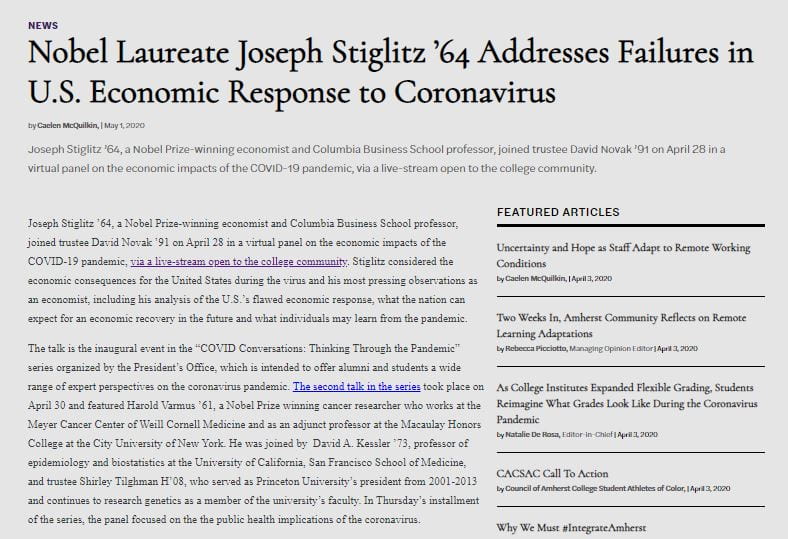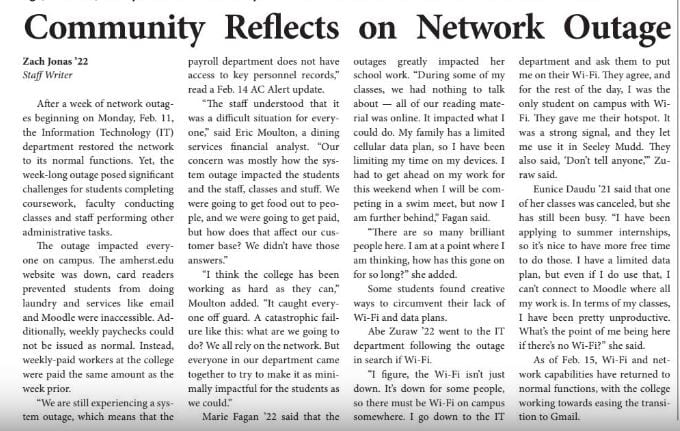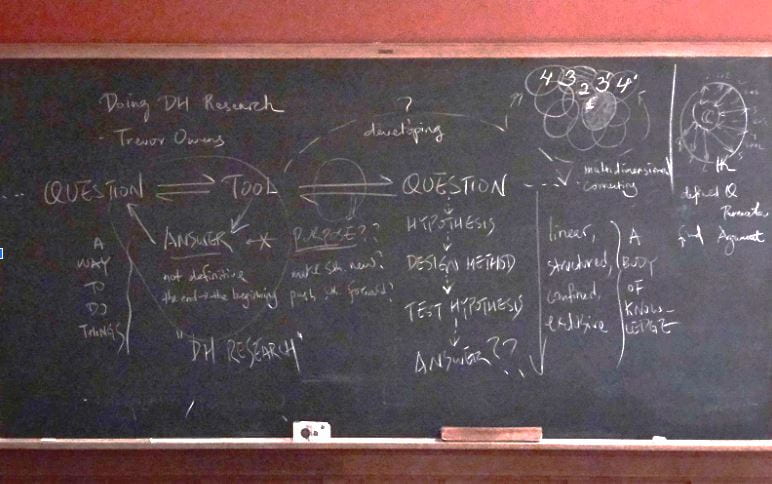A dead bird of azure and emerald feathers was covered by a fallen leave. People are amazed by its beauty, which makes its death more disappointing. They want to give the bird a formal burial and document this “disaster”. Three steps away was a dead grey sparrow whose unimpressive appearance attracted little attention. No one bothered with a trivial loss, nor would they refer to it as a “disaster”. But who is there to say that the death of a bird without the fanciful colors is not a disaster? Who is there to say that a bird dead for other reasons (shot by hungry hunters) makes disaster more/less intense?
I took a walk around the Frost Library where supposedly I would spend my 6 weeks as a Digital Scholarship Summer Fellow. I stood at its southeast corner, gazing at the reindeer sculpture on the second floor. Just beneath the reindeer is a plate that memorializes the Library’s predecessor, Walker Hall. Constructed of fine Monson granite, Walker used to be the largest and most elaborate building on campus back in the 19th century. Through creating the timeline for disasters in the history of Amherst College, I learned Walker Hall was demolished twice: firstly, a tragic fire that gutted most parts of the building and its archived administrative records at the night of March 28, 1882; then, a less tragic, college-planned razing to make the way for the current Robert Frost Library in 1963.
[The rebuilt Walker is] more than ever, the archives, the treasury, the capitol, the acropolis of Amherst College. (Prof. W.S.Tyler, AC 1830)
The two birds re-occupied my mind. As a creator of the timeline, should I include both birds’ death as disasters, or should I include only the more beautiful one? Similarly, should I include both demolishments of Walker Hall, or only the first one, considering the second one is consciously planned, executed, and approved by the administration? Furthermore, does the arisen Frost Library make the second Walker Hall’s demolishment meaningful, therefore less disastrous? Would the raze of Walker Hall seem more disastrous than other buildings on campus?
Archivists are gatekeepers of history, and they should be conscious of their power in “rewriting” the records. To some degree, what’s not in the archive is equally as important as what’s in it. The principle of inclusion and, inevitably, exclusion challenges my definition and stereotypes about disasters. For example, if I define a disaster as an incident and/or a continuation of events that cause great damages or losses, both demolishments should be considered as disasters (the damage of Walker Hall, planned or not, was the criterion of disaster). However, if I define a disaster as an event that leads to unfortunate consequences, only the fire at Walker Hall should be recognized as a disaster (the event’s positive/negative aftermath becomes the threshold). Let Walker Hall be only one example of the decisions I have to make in creating the timeline. Should the Amherst Uprising be included as a response to a disaster or simply “disaster per se”? What about a sexual assault on campus? National disasters that would surely impact some Amherst people?
What’s a bit consoling, the word “disaster” has also evolved over time. From Italian “disastro”, literally meaning “ill-starred”, we could infer that people in the past times think disaster as a destined outcome, one that cannot be prevented or altered. Speaking with Matthew Hart, the Director of Emergency Management at Amherst, I learned that disaster research and management has been understood as a science. Yet however hard we try to apply our rationality to approach disasters, we are still caged by our emotions– fear, anxiety, uncertainty– that inherited from our notion of uncontrollable destiny. A part of the final project we deliver focuses on analyzing how writers in the Amherst Student use the word “disaster” in their reports and op-eds. Not surprisingly, writers charge the most intense emotion on the “disasters” of sports games– a goalkeeper slipped to give away a goal for free, or a tactic that did not work as intended. Quite in contrast, writers seldom use “disasters” to describe an administrative failure or a misappropriate student behavior. Instead, they may complain about the problems behind the incidents as though a “disaster” is not meant to be analyzed but to be absorbed purely emotionally.
It’s strangely exciting to examine disasters in the history of Amherst College. On one hand, I know what it takes to best analyze disasters in the past– a cool head, a pair of analytical eyes, and a logical narrative. Disasters repeat because people can’t take them seriously or don’t analyze them using scientific principles. On the other hand, I am also aware that I’m living through one of the most memorable disasters of Amherst History– the COVID-19 pandemic. The personal experience feels so trivial in a large pool of archived documents. Perhaps it is inherently impossible for one to truly measure the impact of a disaster just by analyzing the “objective” statements and news reports. I’ve created an index to probe the intensity of each disaster in Amherst history, but I understand there is much to do. Only by balancing between the roles of an analyst and a storyteller could one be a true Digital Humanist.
In some years, future archivists would examine our work on the disasters much like me observing the birds. They will draw their own conclusions– whether I measure the impacts accurately, intervene too much, or include everything I should. But just like there will be a Frost after a demolished Walker, there will be new research about disasters that hopefully builds on our questions and discoveries. My thought process will become a part of the archive.




